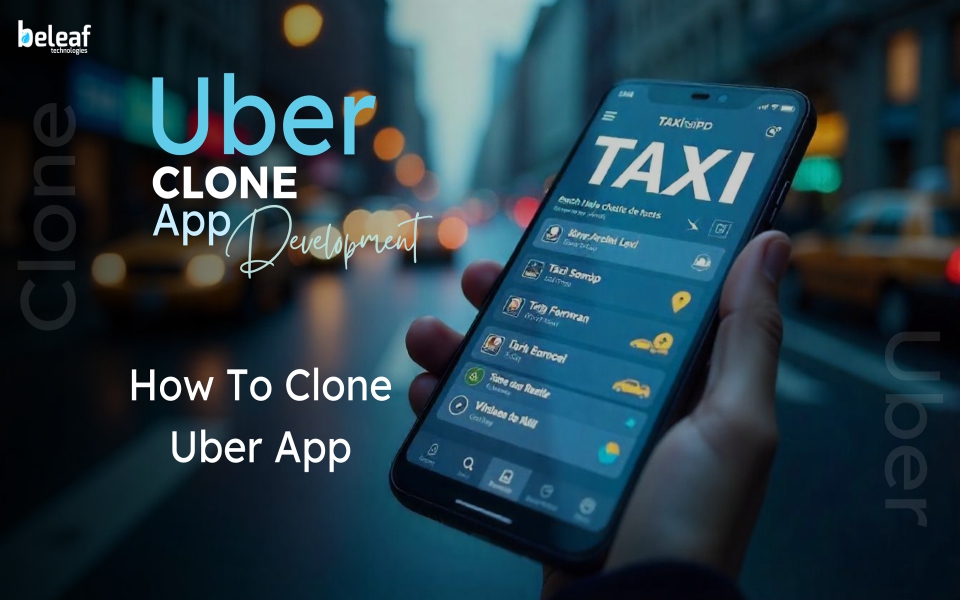Introduction
Apps like Uber have changed how people travel. If you want to make a similar app, it might seem difficult, but by following simple steps, you can do it. Whether you want to start a ride-sharing service in your city or improve an existing one, this guide will help you build an Uber-like app.
Step 1: Understand the Key Features
Before making the uber clone app, you need to know the important features that make Uber work. These include:
-
User Accounts – Riders and drivers need to sign up and log in.
-
Live GPS Tracking – Users should be able to book rides and see the driver's location.
-
Fare Estimation – Show the ride cost before booking.
-
Payment System – Offer payment options like credit cards, wallets, and cash.
-
Matching Riders with Drivers – Connect users with nearby drivers.
-
Ratings and Reviews – Allow users to rate their rides.
-
Admin Dashboard – Help manage users, rides, and payments.
Knowing these features will give you a clear idea of what to build.
Step 2: Choose the Right Technology
The right technology will help your app run smoothly. Some common choices include:
-
App Design (Frontend): React Native, Flutter, Swift, or Kotlin.
-
Backend (Server-Side): Node.js, Python, or Ruby on Rails.
-
Database: PostgreSQL, Firebase, or MongoDB.
-
Maps and GPS: Google Maps API, Mapbox, or OpenStreetMap.
-
Payment Integration: Stripe, PayPal, or Razorpay.
Picking the right technology will make your app smooth and secure.
Step 3: Make a Simple and Clear Design
A well-designed software is simple to use. Focus on:
-
Easy Navigation – Users should easily book, track, and pay for rides.
-
Simple UI – Use clear icons and a modern design.
-
Quick Booking Process – Reduce the steps needed to book a ride.
-
Clear Buttons – Make sure "Book a Ride" and "Cancel" buttons are easy to see.
A simple design makes users happy and encourages them to use the app more.
Step 4: Develop the Rider and Driver Apps
You need two apps—one for riders and one for drivers. Both must work together.
-
Rider App Features:
-
Sign-up and login
-
Ride booking and scheduling
-
Fare estimation and payment options
-
Live driver tracking
-
Ratings and reviews
-
Driver App Features:
-
Registration and approval process
-
Ride request notifications
-
Navigation with maps
-
Earnings tracking
-
Ratings and reviews management
Both apps should update in real time for smooth communication.
Step 5: Add a Secure Payment System
A secure payment system helps users pay easily. Follow these steps:
-
Use a trusted payment provider – Stripe, PayPal, or Braintree.
-
Allow different payment methods – Credit cards, wallets, and cash.
-
Ensure security – Use SSL encryption to protect payments.
A safe and smooth payment system builds user trust.
Step 6: Add Live Tracking and Notifications
Real-time tracking and alerts improve the user experience. To do this:
-
Use GPS services – Google Maps API or Apple Maps.
-
Enable live updates – Use Firebase or WebSocket for real-time tracking.
-
Send notifications – Notify users when the driver arrives and when the ride starts.
Live tracking makes rides safer and more smooth.
Step 7: Set Up an Admin Panel
The admin panel helps manage the app. Key features include:
-
User and Driver Management – Approve accounts and monitor activities.
-
Ride and Fare Management – Track rides and adjust fares.
-
Reports and Analytics – View ride data and earnings.
-
Customer Support – Help users through chat or email.
A strong admin panel makes app management easy.
Step 8: Test and Launch the App
Before launching, test your app to make sure everything works well:
-
Check Features – Ensure booking, payments, and tracking work properly.
-
Test Performance – Make sure the app is fast and smooth.
-
Check Security – Protect user data and payment details.
-
Get User Feedback – Let a small group of users test the app and share feedback.
Once everything is ready, launch your app and promote it.
Conclusion
Creating an Uber-like app is simple if you follow the right steps. With good planning, the right technology, and a user-friendly design, you can build a successful ride-service app.




